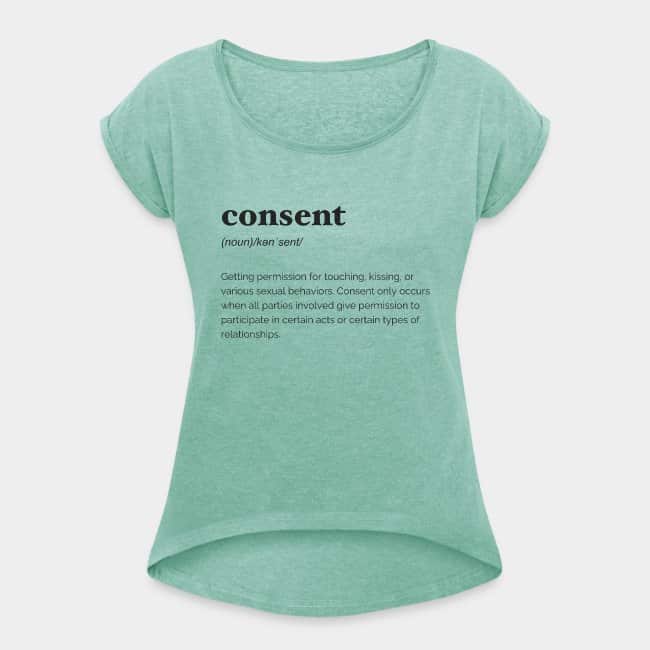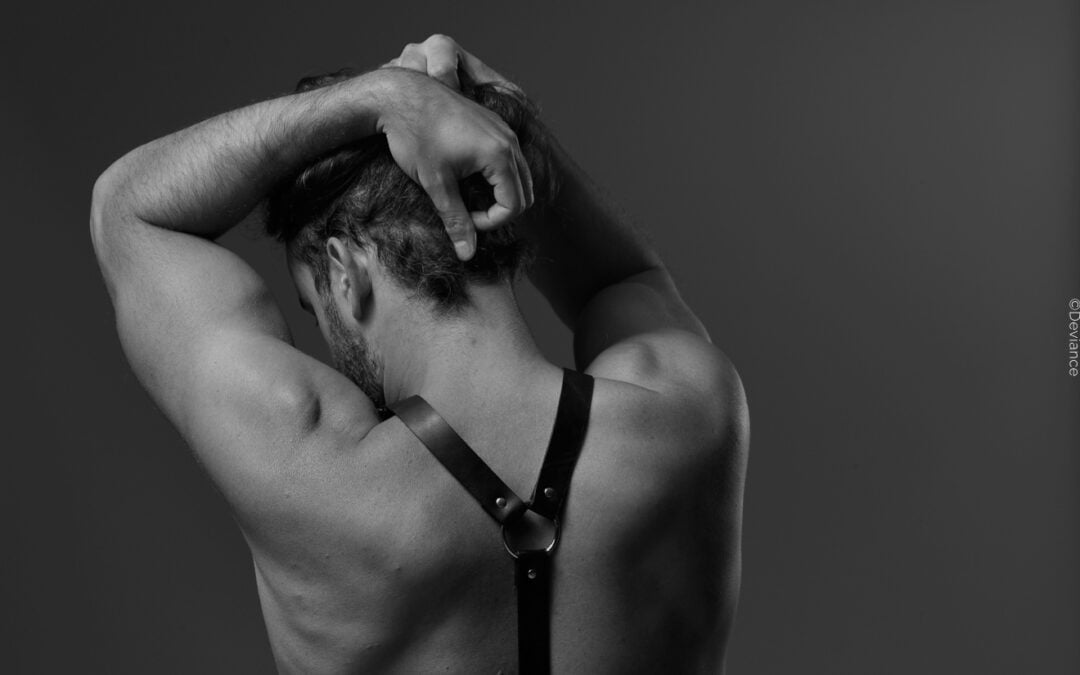Content/trigger warning: term “slave”
What does TPE – Total Power Exchange mean?
TPE stands for “Total Power Exchange,” a complete power exchange where one side has total control over the other. That means the dominant person has complete authority over the submissive person 24/7, every day, always. BDSM is always based on mutual consent and agreement between all parties. This distinguishes BDSM from an act of violence or abuse, as it means that all parties are fully consenting to the actions.
TPE is a type of relationship that involves deep closeness. Within those practicing TPE, there are various levels of control. Essentially, TPE is a goal both parties aim for: The bottom person is always and constantly aware of their role and position. The top person makes decisions for the bottom and assumes responsibility with the well-being of the bottom in mind.
While some refer to slave contracts, the rules of Gor, or the history of O, there is no fixed code or rulebook for TPE; it takes place on an individual basis within each relationship.
Total Power Exchange doesn’t mean committing to extreme practices like cutting or other edge play types. It doesn’t necessarily require giving up autonomy or closing bank accounts and contracts. The extent of the external control is determined by the people involved in the relationship.
TPE and consent
When someone exercises total control over another person, the question of consent arises. This concept clashes with the norms and values society imposes.
Before entering a TPE relationship as a Sub or Serf, an established and trusted relationship should exist. This connection must be stable and secure, with all rules, limits, and boundaries known and tested. It’s important not to dive into a relationship with TPE rules without prior clarification. Instead, one should mentally apply this principle to various aspects of life. For example: If the Dom chooses a dish at a restaurant, it can be a nice gesture. But when every food item and the time of eating is controlled, it becomes more complicated. Because this intervention affects daily life and the person’s physical well-being.
The extent of control is the key question here. Permanent orgasm control is quite plausible in BDSM contexts, as well as the wearing of symbols or permanent marks. However, the limits of “total” are individually defined within each partnership. Even though this relationship style is intense and far-reaching, it remains fair, independent, and attentive. It requires enormous responsibility from both partners—both the submissive and the dominant person. Therefore, it is crucial that both parties communicate their expectations openly and honestly.
In a TPE relationship, there may be a safeword. However, this is a controversial point, as the dominant person should theoretically know the submissive so well that a safeword is not necessary. Nevertheless, safewords are undoubtedly one of the most effective safety measures to ensure clear communication and the well-being of all involved.
It is also important to consider the legal situation: by law, “No” means “No,” and no consensual conversation or written agreement changes this. Therefore, it is in the best interest of all involved to take appropriate precautions.
Personal consent principle
Well-known BDSM principles like SSC and RACK are widely used. However, many TPE practitioners prefer the CCC principle—Committed, Compassionate, and Consensual—which stands for connected, empathetic, and consensual. This concept is less common today because many do not automatically equate connection or relationship with consent. However, many “older” BDSM practitioners still adhere to this principle.
What can a TPE relationship look like?
A TPE relationship is possible across all roles, such as Daddy/Mommy/Caregiver and Littles or Owner and Pet. However, they most commonly occur between Master/Mistress and Serf, as people in these roles tend to be drawn to a strong power dynamic. They value discipline and structure.
Typical features of a TPE relationship include:
- Orgasm control, control over sexual partners
- Setting daily rules, protocols, and forms of address
- Control over all or specific expenses
- Establishing a dress code for daily life and/or meetings
- Division of tasks in daily life
TPE relationships are often shaped by challenges in daily life, as control is exercised not only in intimate settings but also in everyday life. This control often extends beyond daily routines and influences the participants’ self-perception. At the same time, there are challenges where the Dom pushes the sub beyond their own self-image. In these moments, the Dom takes responsibility for all major decisions, leaving the sub in a position of powerlessness.
What should you consider in a TPE relationship?
Aftercare
TPE is a relationship concept that doesn’t truly end. Nevertheless, aftercare is important. Whether in the form of a shared ritual to end a session or cuddling, snacks, and affection. In this moment, the dominant person can also provide rest and comfort. TPE involves intense sessions and everyday play, but without aftercare, it would be incomplete.
Personal responsibility and accountability
In a TPE relationship, it’s about relinquishing control in all areas of life. However, this is unrealistic for most people. Taking full responsibility for all decisions would require continuous communication and presence. Often, it involves making decisions in the dominant person’s interest or discussing certain things intensely and then ceding the final decision.
In some TPE relationships, the dominant person even decides on the submissive person’s career path or determines changes like surgeries, piercings, or tattoos. Even living situations or lifestyle choices can be influenced. These decisions, however, are only made after a long relationship and deep trust.
As a sub, you also have responsibilities toward the dominant person in a TPE relationship. When the Dom holds decision-making power, that responsibility should not be taken lightly. Therefore, it is essential to communicate clearly, express desires and needs, and voice your opinion within the hierarchical structure.
Personal responsibility also applies to the top. They too need aftercare, especially when taking on daily and ongoing responsibility. TPE sometimes requires making decisions that may cause dissatisfaction or discomfort. In these moments, the sub should respond supportively and positively.
All circumstances, consequences, and potential effects must be fully understood by all participants, especially the dominant person, who must handle this awareness with care. It is essential to assess both your own boundaries and those of your partner to minimize risks as much as possible. As a Dom, you are often in the perpetrator role in these dynamics. Therefore, it is especially important to take responsibility for the sub’s well-being and ensure that all actions align with the agreed-upon rules and mutual trust.
u’re kinky, always playing with consent and want to show it? #ExpressYourKink with the items from the Deviance Shop! Here you’ll find a wide selection of everyday clothing, accessories, and decorative items with matching terms and designs.
Do you like what you see? You can find these and many more clearly ambiguous designs on a wide range of products from shirts and tops to sweaters and hoodies, as well as caps and home accessories in the Deviance Shop! #ExpressYourKink












